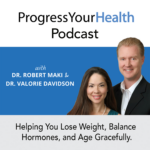
With all of the recent changes in health insurance, blood testing is more expensive than ever. Below are few questions and situations we get from our patients and thought it would be good to discuss. Do any of the following sound familiar?
We see this often. Patients complain that they have been to many doctors, internists, endocrinologists and all that gets tested is a TSH for thyroid function. With the internet and dissatisfaction in healthcare, people are becoming their own health advocates. People are researching and keeping a keen eye on their health. People know that they want more than a TSH test for thyroid function. But they run into a wall’ with their conventional doctor. Their primary care, internist, or endocrinologist will not run a free T4 or a free T3.
Often thyroid conditions like Hashimoto’s Disease can run in the family. I have a patient that swear their sister, mother or brother have a thyroid problem too. But either the family member is reluctant to approach their doctor about it. Or their doctor will not order the thyroid functional testing or Hashimoto’s antibodies. Read on so I can show you how to find out if your family member has a thyroid issue.
Unfortunately, health insurance can be costly. My monthly health insurance premiums cost more than my first car. Granted, my first car was not very nice, but I had a whole lot more fun with it than my health insurance. People know they need to get regular screenings, annual and routine blood work done; however, some are terrified that without insurance it will cost a fortune. Honestly, blood work out of pocket can be pretty much the equivalent of a mortgage payment. But read on, I have some tips to help you get blood work without having to promise your first born.
My deductible is $5000+. I hope that I never meet that 5000$ deductible because if I do, that means something unfortunate happened to me. I might get negotiated rates for blood work, but I will still have to pay out of pocket for my blood work. This could be quite costly.
Time is money. Time is not a renewable resource, meaning it is going to run out someday. And I don’t want to waste my precious time waiting in a waiting room full of sick people so I can see the doctor. The doctor will then spend 3 minutes with me and give me an order for blood work. Then I have to come back to go over those results. Let’s save some time and avoid all that nonsense. Read on to find out how.
I have heard this a lot recently, which is what prompted me to write this. I have patients that have insurance and still have to pay over a $1000 to pay for their blood work. Whether it is a high deductible or limited coverage, they end up with a bill several weeks later that can be well over a 1000$. I know it seems silly that you are paying for healthcare coverage and you get a large ‘out of pocket’ bill for blood work. This a pretty common theme in the last few years.
We all know you cannot walk into a lab like Quest or LabCorp without a requisition from a doctor. And everyone is under the assumption that if insurance is not paying for the test, then it is too expensive. Yes, paying Quest and LabCorp out of pocket directly for lab testing is very expensive, sometimes over 1000$.
We have physician-only accounts with Quest and LabCorp to get you reasonable out of pocket pricing. Recently, I have had three patients tell me that they were billed over a 1000$ for their blood work because of deductibles and limited insurance coverage. That is ridiculous because out of pocket those tests would have only cost them about $150 to $300 at the most! So if you want a specific lab test just let me know what tests you want, and I will put them together for you with pricing.
I have been getting a lot of patients that want to test their family member’s thyroid function lately. Recently I had a patient with Hashimoto’s hypothyroid tell me that she knows’ her sister has a thyroid problem, but her sister will not go to the doctor to get tested for Hashimoto’s or even for hypothyroid.
I felt terrible because I can’t legally order a test through their insurance without establishing them as a patient. We talked about how we can get her sister a test so she can see the data on paper and realize that she too has a thyroid issue. However, we can order the tests cash-pay without establishing them as a patient. They just buy the test, get it done and get the results emailed to them. It turned out, my patient purchased the test for her sister.
Just go to our online store to check out our lab panels and pricing. Like I said if there are tests you do not see that you like. Just email us, and we will get the test ordered for you.
As an end of the year special, we have put together a thyroid-function panel discounted. Click here and buy it for someone and they have six months to get the test done.
Thyroid Lab Testing Specials – get 25% off thyroid testing through the end of January 2018. Use the code THYROID to get the discount.
The post How Much Do Blood Tests Cost? | PYHP 022 appeared first on .
Discover the common and unfamiliar symptoms that you might be experiencing. Get access to cases of real women with hormonal conditions.

In this episode, we talk about hormone treatments for perimenopause and menopause. There is a vast distinction between perimenopause and menopause when it comes to treatment options. We often see women who are being treated for menopause when they are genuinely not in menopause. Meet Linda: Linda is a listener who sent us a question […]
Recently, Catherine posted a question on our website about Biest cream, and we knew this could interest our listeners. Biest is a combination of estriol and estradiol, one of the most common forms of estrogen therapy used in bio-identical hormone replacement. There are many doses, ratios, options, and methods of using Biest, so we thought […]
Welcome to the Progress Your Health Podcast! This is a podcast that helps you learn about balancing hormones, especially during perimenopause and menopause. We love hearing from our listeners. If you have a question, please visit our website and click Ask the Doctor a question. Let’s read Brigitte’s question! I have been listening and learning […]
In this episode, we talk about the difference between perimenopause and menopause. Both Dr. Maki and I (Dr. Davidson) have worked with women in perimenopause and menopause since 2004 and sometimes get a bit myopic and technical when it comes to explaining the differences. The other day, a patient of Dr Maki’s asked the question, […]
We recently got a great question from a listener and want to share it with you. This question is about a perimenopausal 51-year-old female. She is still menstruating and having confusion about her hormone testing and the hormone therapy that she is currently taking. She is experiencing some breast tenderness and irritability related to her […]
in this episode, we answered a listener’s question. We love questions from listeners. If you have a question, please visit our website and click Ask the Doctor a question. Here is the listener’s question: I have been perimenopause for at least 4 years now I am 47 and after completing a Dutch test with a […]